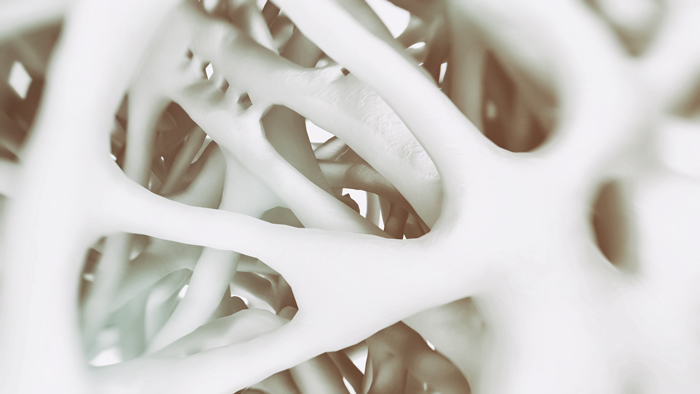CELLEX
PROJECTS



OSTEONET:
The project proposes an innovative, bioinspired, and integrated approach to the development of engineered bone tissues mimicking healthy and aged bone that will be used in bioreactors as in vitro bone models for preclinical drug screening and basic physiology studies. The networking activities planned in OSTEONET will unravel and share knowledge on the mechanisms driving the information transfer from the biochemical and biomechanical levels, which drive osteosynthesis and osseointegration, to the cascade of molecular and cellular events emerging as an elaborated and physiological bone, and on the mechanisms of the different response of healthy and aged bone tissue to mechano-biological stimuli and drugs.
Call: HORIZON-MSCA-SE-2021.
Consortium: Università della Calabria, Cellex srl, Universiteit Gent, Consorzio di Ricerca Hypatia, Tel Aviv University, Technische Hochschule Mittelhessen, Athina Research Center, InSyBio, Lithoz gmbh, AIfactory sp zoo, 7hc srl
REGENERATION:
Bone aging reduces the quality of life of the elderly and puts social and economic burden on society. Aging bones fail more easily when challenged mechanically or with toxicants or pollutants and respond differently to drugs than healthy bone. To personalize therapies and enable better preventive care for the elderly it is essential to develop reliable and sustainable in vitro models of aged bone tissue alternative to animal tests which often fail to capture human-specific features.
Call: HORIZON-MSCA-SE-2022.
Consortium: Athina Research Center, Cellex srl, InSyBio, Eden Tech, Telea Biotech, Cnr IFT, University of Applied Sciences and Arts of Southern Switzerland, SUPSI.
BLUES:
The objective of BLUES is to expand the potential to produce valuable and unique bioactive compounds from marine invertebrates by developing novel cultivation systems of cell lines from 4 phyla of marine invertebrates (Porifera, Cnidaria, Echinodermata, Chordata) and optimizing production yield as an alternative to wild harvesting. For many years, research has been done to derive continuous cell lines from invertebrates. Only recently, BLUES partners reached a breakthrough and created the first continuous marine sponge cell line. Results demonstrated that sponge cells of several species can divide extremely rapidly. The ambition is to design the pathway towards industrial bioprocesses using marine invertebrate cell lines of different phyla as a chassis towards the production of unique high-value marine bio-based compounds, an environmentally sustainable alternative to wild harvesting. The technology that will be developed in BLUES will make it possible that valuable marine-natural products are produced in bioprocesses and with that contribute to the Blue Bioeconomy.
Call: HORIZON-CL6-2023-CircBio-01-11 – Novel culturing of aquatic organisms for blue biotechnology applications
Consortium: Wageningen University, Cellex srl, Moreforsking AS, Israel Oceanographic and Limnological Research Limited, Matis OHF, Universidade do Minho, Università degli studi di Genova, Geonardo, University of new South Wales
BINDER:
Bioprocess Digital Twin for static and dynamic in vitro fertilization embryo culture. This proposal aims to develop a digital twin of embryo culture bioprocesses generated through in vitro fertilization, by modelling all relevant culture characteristics. This includes, in the case of multiple embryo cultures, the development of algorithms for selecting and predicting embryos with a higher implantation probability. Additionally, the proposal involves comparing static and dynamic culture methods through experiments on bovine embryos, which will then be translated to human cells using the digital twin approach.
Call: MIMIT Innovation
Consortium: Wageningen University, Cellex srl, Moreforsking AS, Israel Oceanographic and Limnological Research Limited, Matis OHF, Universidade do Minho, Università degli studi di Genova, Geonardo, University of new South Wales, 7hc srl.
3D CREATOR:
The 3D-creator project, carried out by Cellex s.r.l, Fondazione Edoardo Amaldi, 7hc s.r.l and the CNR Institute of Translational Pharmacology, aims to develop an automated platform for the culture of bioengineered tissues, both so-called hard and soft tissues.
Bioengineered tissues are defined as those human tissues created in the laboratory for their therapeutic application (e.g. skin fragments for the treatment of severely burned patients). The aim of the project is to create bone and oesophageal tissues using an integrated culture system with an advanced control system to reduce manipulation by operators and, therefore, reduce the risk of bacterial contamination.
This platform aims to reconstruct as closely as possible the native microenvironment of the bioengineered tissue, using scaffolds made of biocompatible materials that come as close as possible to the architecture of the native tissue (bone and oesophageal). All this will make it possible to create a reliable in vitro model for preclinical study, in line with the principle of the 3Rs: Reduce, Refine, Replace, which aims to reduce the use of animal models in biomedical research.
ITALIAN VERSION
Il progetto 3D-creator, portato avanti da Cellex s.r.l, Fondazione Edoardo Amaldi, 7hc s.r.l e l’istituto di Farmacologia Traslazionale del CNR, si propone di sviluppare una piattaforma automatizzata per la coltura di tessuti bioingegnerizzati, sia quelli cosiddetti duri che quelli molli.
Per tessuti bioingegnerizzati s’intendono quei tessuti umani creati in laboratorio per la loro applicazione terapeutica (e.s. frammenti di pelle per il trattamento di pazienti gravemente ustionati). L’obiettivo del progetto è quello di creare tessuti ossei ed esofagei usando un sistema di coltura integrato con un avanzato sistema di controllo per diminuire le manipolazioni da parte degli operatori riducendo, tra l’altro, anche il rischio di contaminazione batterica.
Questa piattaforma ha lo scopo di ricostruire il più fedelmente possibile il microambiente nativo del tessuto bioingegnerizzato, attraverso l’uso di scaffolds (“impalcature”) realizzati con materiali biocompatibili che si avvicinino il più possibile all’architettura del tessuto nativo (osseo ed esofageo). Tutto ciò consentirà di creare un modello in vitro affidabile per lo studio preclinico, in linea con il principio delle 3R: Reduce, Refine, Replace, che punta a ridurre l’uso di modelli animali nella ricerca biomedica.
Call: Avviso “Riposizionamento Competitivo RSI” a valere sul Programma FESR 2021-2027 di cui alla Det. n. G18823 del 28/12/2022 e concesso con la Det. n. G15206 del 16/11/2023 – CUP F89J23001140007.



WHY CHOOSE CELLEX
EXPERIENCE
PROFESSIONALISM
COMPETENCE
